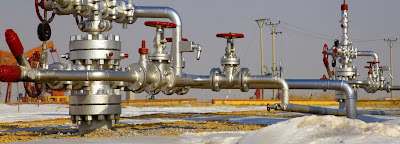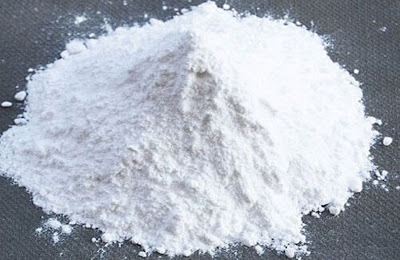Growing Concerns related to Hydrate Inhibitors
 |
| Hydrate Inhibitors |
Hydrates are crystalline ice-like structures that can obstruct or block flow in oil and gas pipelines. Formed by water molecules which combine with gas molecules under certain conditions of low temperatures and high pressures, hydrates have the potential to severely disrupt production and transportation activities in the oil and gas industry. Hydrate inhibitors are chemicals routinely used to prevent hydrate formation in pipelines and flowlines.
What are Hydrates and Why are they a Problem?
Hydrates form when water and gas molecules crystallize resulting in a solid
crystalline lattice structure. The water molecules act as cages which trap gas
molecules inside them. Common gases which can form hydrates include methane,
ethane, propane and carbon dioxide. Hydrate blockages lead to loss of
production and reduced flow rates. Left unmitigated, hydrates can accumulate
into large obstructions causing shutdowns. As hydrates have a low melting point
close to 0°C, even minor temperature fluctuations are enough to trigger
formation. Managing hydrate risks is essential to safe and efficient flow
assurance in oil and gas operations especially offshore and in colder regions.
Types of Hydrate Inhibitors
There are three main classes of chemicals used as Hydrate
Inhibitors based on their mechanisms of preventing hydrate
formation:
- Thermodynamic Hydrate Inhibitors (THIs): Work by depressing the hydrate
formation temperature-pressure boundary through interaction with water and gas
molecules. Common THIs are methanol, ethanol and ethylene glycol. They reduce
the chemical potential for hydrate formation.
- Low Dosage Hydrate Inhibitors (LDHIs): Often polymers, work at extremely low
dosages in the 50-150ppm range through surfractant mechanisms. Examples include
polyvinylcaprolactam and polyvinylpyrrolidone.
- Kinetic Hydrate Inhibitors (KHIs): Do not prevent hydrate formation
thermodynamically but rather inhibit crystallization kinetics. Common KHIs are
quaternary ammonium salts which adsorb onto the hydrate forming surfaces
slowing growth rate.
Each type has their own advantages and suitability for different process
conditions. Most pipelines use hybrid systems combining thermodynamic and
kinetic inhibitors for robust protection.
Mechanism of Action
Thermodynamic inhibitors work by getting incorporated into the water lattice
structure during hydrate formation. Their presence distorts and weakens the
cage lattice strength making it impossible for gas molecules to be trapped
inside. Some THIs may also separate the water-gas interface decreasing chances
of contact.
LDHIs and KHIs work through adsorption onto the hydrate forming surface. LDHIs
form a surfactant layer preventing growth while KHIs adsorb reversibly slowing
crystal growth kinetics until hydrate dissociates due to thermal fluctuations.
Both inhibit hydrate crystallization without preventiong formation
thermodynamically.
Field Application Considerations
Several factors determine inhibitor type selection and dosage levels for field
application:
- Process Conditions: THIs most suitable for deeper waters with higher
pressures. KHIs better for subsea pipelines with minor temperature fluctuations.
- Inhibitor Properties: Solubility, ability to remain in solution, degradation
resistance over years in field. Ease of removal important for fiscal metering.
- Economic Feasibility: Cost needs balancing with protection reliability. LDHIs
most cost effective used with thermodynamic "boosters".
- Environmental Impact: Toxicity, biodegradability are important especially for
offshore discharges. Methanol, ethylene glycol restricted in many regions.
Proper chemical injectionquit rate and concentration monitoring systems are
required to maintain protection. Foaming/defoaming agents may also be needed
depending on fluid properties. Regular testing helps verify hydrate inhibition
and make adjustments if required. Reliable hydrate management optimizes uptime
and profitability from oil and gas assets.
Advancements in Hydrate Inhibitor
Technology
Continued research aims at developing more eco-friendly and low dosage
inhibitors. Enhanced polymer inhibitors scavenge free water improving
inhibition at lower ppm. Hydrate blocking agents get deposited inside pipelines
preventing crystallization at interfaces. Self-adjusting,
"inhibitor-switching" chemicals respond faster to process condition
changes. Hybrid nano-inhibitor systems boost inhibition by orders at ultra-low
dosages. Use of natural anti-freeze proteins show promise due to
biodegradability. Computer simulations and advanced lab tests help screen
candidate chemicals faster reducing costs. Overall focus remains on improving
inhibition efficiency while lowering environmental impact and lifetime
operational expenses.
Get More Insights on this Topic- https://www.marketwebjournal.com/lets-know-importance-of-hydrate-inhibitors/



Comments
Post a Comment